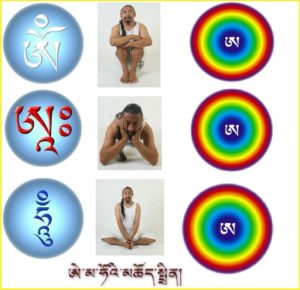KINDS OF HAPPINESS AND THE PATH OF TIBETAN YOGA

I am very happy today because we have all come together to engage in a joyous activity -examination of the causes and paths of happiness.
Wherever we look, sentient beings, regardless of their differences, wish to be happy. The problem is that most of them do not know how to achieve happiness.
In the Tibetan Buddhist tradition we talk about two kinds of happiness: the worldly happiness (happiness of samsara) and the ultimate happiness (happiness of nirvana). When most people talk about happiness, they have the worldly things in mind. We think that we would be happy if we had more money, better job, good family and good health etc. Nirvana happiness, on the other hand, means the wish to transcend samsara with the final goal of enlightenment. It can be useful to think about similarities and differences between the happiness of samsara and the happiness of nirvana in terms of gradients.
Let’s, for example, take a scale from 0 – no happiness to 100 – the highest possible level of happiness. The mundane pleasures and happiness that most people experience would score somewhere between 1 and 5 on such a scale.
As you start generating more kindness towards yourself and others, and your mind becomes more balanced, you will proceed through previously not experienced higher levels of happiness. The highest levels of happiness are equal to experience of an enlightened being – a Buddha.
At that level, the fundamental kindness and compassion is combined with the ultimate wisdom. Such levels of happiness are for us hard to imagine, but with more meditative practice we can gradually experience more and more glimpses of the advanced stages.
Now whether we are considering the happiness of samsara or nirvana the seed of all kinds of happiness is the same – it is, as they say in Tibetan Buddhism, a good heart.
In the Western culture this notion of a good heart can be translated as a healthy balanced mind filled with kindness, compassion and wisdom. If you cultivate this mind of kindness, your activity will become the source of your happiness. The seeds that we plant will lead to fruition that will be similar to the seeds.
If we cultivate a balanced mind of kindness to oneself and others, our mind will develop a virtuous habit of staying in that state. This will lead to a more genuine and sustained feeling of happiness.
So what can we do to be more happy and progress to the higher levels of happiness?
 It is believed that Tibetan Yoga is one of the most efficient paths towards this goal. Its effectiveness stems from skilled combination of the yoga of body, the yoga of speech and the yoga of mind.
It is believed that Tibetan Yoga is one of the most efficient paths towards this goal. Its effectiveness stems from skilled combination of the yoga of body, the yoga of speech and the yoga of mind.
The yoga of body focuses on purification of energy channels and chakras resulting in good health and increased mental balance. The yoga of speech refines the energy of breathing and uses the sound of mantra to purify mind and to gain more mental clarity. The yoga of mind is the central aspect of the training in Tibetan Yoga, and the other types of yoga are aimed at supporting it. The yoga of mind involves various mental practices aimed at cultivation of kindness and compassion combined with ultimate wisdom.
Wisdom in the Tibetan Buddhist tradition means realization of the real nature of phenomena and abiding in the deepest nature of our mind – the mind of a Buddha. While all of us possess this ultimate aspect of mind, most of us do not realize this because of mental confusion and focus on superficial layers of the mind.
In summary, Tibetan Yoga is about mind training and individual experiential examination of the mind in order to cultivate genuine happiness. To get a more concrete demonstration of the practices of Tibetan Yoga, we can together practice five simple practices aimed at purification, calming, energizing and balancing the body, speech and mind.
In Dharma Blessing, Khenchen Lama Rinpoche.